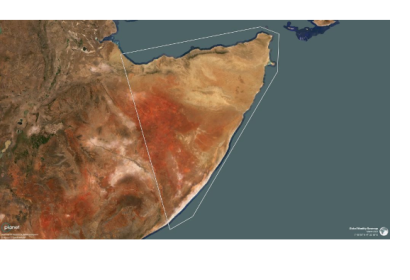Record low rainfall has triggered a disastrous drought in the Horn of Africa, causing a humanitarian crisis. Several individuals have been forced to leave their homes while many more are struggling with food scarcity due to a reduction of 40-70% in the average rainfall. This has resulted in water becoming a scarce resource. The lack of rainfall for one season can be disastrous, but experiencing six consecutive seasons without sufficient rain is beyond comprehension. The circumstances are so severe that the difference between survival and death can be measured in mere millimeters.
Organizations such as Planet are utilizing "planetary forensics" to assess the level of moisture in the soil, in order to comprehend the severity of the situation. By using Soil Water Content (SWC) data, they can accurately determine the environmental condition of dry areas. According to initial models by Planet, the recent drought in the Horn of Africa has the lowest moisture levels in the last ten years, with two extended periods of extreme dryness overlapping with the 2021 autumn and 2022 spring rainy seasons. This data can be used to estimate the intensity of the drought and take action to prevent widespread famine.
While it is typical for weather patterns to vary, the impact of drought is being intensified by climate change. Even though humans cannot control global weather systems, having better tools to map and measure their impacts can equip governments, international relief efforts, and the private sector with the necessary information to take action. Planet's SWC data, which provides more accurate measurements of soil moisture than standard models, can help quantify the effects of dryness in real-time and with remarkable detail when compared to historical baselines. This data can help to identify regions that have been severely impacted by drought and can be studied in closer detail.
The current multi-year drought coincides with the La Niña climate system, which typically reduces rainfall in the Horn of Africa while increasing it elsewhere like Southeast Asia. The Horn of Africa might get some relief as this year’s swing of La Niña to El Niño could bring more rainfall. However, the global weather patterns that determine the fates of billions remain largely unpredictable, unstable, and out of human control. What can be done is to leverage all available tools to better grasp the climate’s uncertainty, to compare historical archives with near-real-time measurements to map its changes, and to make informed decisions based on the most accurate data possible.
Main article image: This shape indicates the region of Ethiopia and Somalia in the Horn of Africa where Planet conducted an analysis of Soil Water Content using its satellite data products. Planet Basemaps, March 2023 ©Planet Labs PBC, CC BY-NC-SA 2.0

